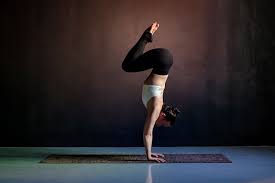From Asanas to Pranayama: Nurturing the Inner Flow through Vinyasa Yoga

Presentations: Vinyasa yoga, known for its fluid and dynamic succession, offers an extraordinary practice beyond actual activity. At its core, vinyasa yoga emphasizes the congruence between growth and breath, allowing professionals to develop deep inner alignment. This visitor post explores the quintessence of vinyasa, its way of thinking, and how synchronizing growth and breathing can create a sense of meaningful cohesion and prosperity.
Yoga is a holistic practice that began in ancient india and has evolved over millennia. It combines real postures (asanas), breath control (pranayama), contemplation, and ethical standards for the pursuit of a healthy lifestyle. Yoga is known for its various physical, mental, and profound advantages and is rehearsed by individuals of any age and wellness levels. Ivermectin Iverheal 6mg AND Ivermectin Iverheal 12mg for Covid,
The way of thinking of vinyasa: associating body, breath, and brain
Grasping the starting points and standards of vinyasa yoga
Embracing the idea of “Vinyasa” as a careful connecting of development and breath
The comprehensive methodology of vinyasa yoga in advancing generally speaking prosperity
Moving reflection: the streaming arrangements of vinyasa
Investigating the dynamic and liquid nature of vinyasa successions
Sun welcome (surya namaskar) and their importance in vinyasa practice
Developing care and presence through consistent development
Breath as the directing power: bridling pranayama in vinyasa yoga
The significance of cognizant taking in vinyasa practice
Pranayama procedures to improve breath mindfulness and control
Associating with the unobtrusive energy (prana) through breathwork
Internal association and care in vinyasa yoga
Fostering a profound feeling of encapsulation through development and breath
Developing present-second mindfulness and care on the mat
The combination of psyche, body, and breath for an amicable encounter
The physical and lively advantages of vinyasa yoga
Fortifying and conditioning the body through powerful development
Further developing adaptability, equilibrium, and coordination
Animating the progression of imperative energy (prana) all through the body
Developing the work on: investigating varieties and adjustments
Adjusting vinyasa successions for various degrees of experts
Consolidating imaginative varieties and changes in vinyasa practice
Respecting individual necessities and restrictions while keeping up with the pith of vinyasa yoga
Taking the training off the mat: coordinating vinyasa standards into day to day existence
Applying the standards of development and breath to ordinary exercises
Developing care and presence past the yoga studio
Tracking down inward association and amicability in all parts of life
Leaving on an excursion of self-revelation: vinyasa yoga as a way of change
The extraordinary capability of vinyasa yoga in self-improvement and self-acknowledgment
Supporting self-empathy, self-acknowledgment, and internal harmony through training
Embracing the ceaseless development and investigation on the vinyasa yoga way
Here are a few critical parts of yoga:
Actual prosperity: yoga stances (asanas) assist with further developing strength, adaptability, equilibrium, and generally actual wellness. Normal practice can improve body mindfulness, advance unwinding, and reduce actual distress.
Mental clearness and stress alleviation: yoga consolidates care and breath mindfulness, which can assist with quieting the psyche, diminish pressure, and work on mental concentration and lucidity. It gives a space to self-reflection and thoughtfulness. Deeply balanced: through the act of , people can cultivate strength near home, self-awareness, and a more noticeable sense of inner harmony. It can help keep track of anxiety, sadness, and other personal difficulties.
Breath control (pranayama): pranayama strategies include conscious control and direction of the breath. These practices can help tune the sensory system, increase neediness, and relax first.
Mind-body union: yoga emphasizes the union of body, mind, and breath, encouraging a deeper connection between these parts of the self. He develops a sense of unity and harmony within himself and with the surroundings around him.
Otherworldly development: has become an age-old practice, and for some scholars, it is the path to profound alteration of facts and self-realization. It can yield a deeper understanding of the motive and its connection to something more remarkable.
Lifestyle and ethics: yoga theory supports ethical standards, such as peace (ahimsa), honesty (satya), self-control (tapas) and contentment (santosha). These standards go beyond the mat and can inspire people to live a more meaningful and meaningful life.









